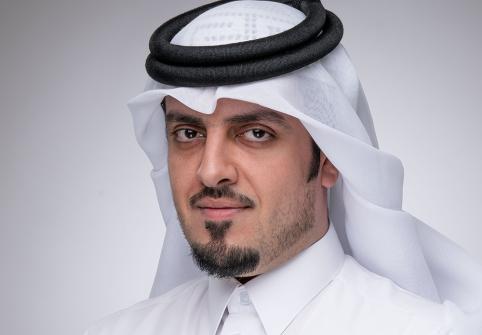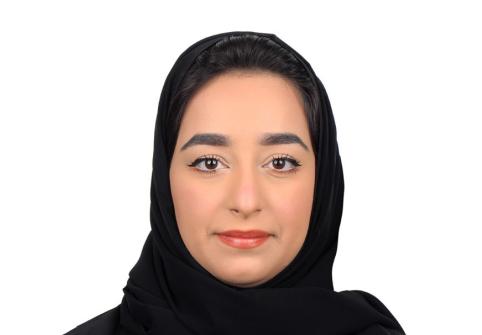Excellence Managing Global Medical Supply Chains in a COVID-19 World
Dr. Frank Himpel
The outbreak of the SARS-CoV-2 virus has challenged societies across the globe and the world is gradually realizing the magnitude and connectedness of its medical, social, economic, and political implications. The pandemic has created a highly complex and dynamic scenario, with governments having had to decide on drastic measures to decelerate its spread and avoid overloading their healthcare systems. In analyzing the impact of worldwide lockdowns from a logistical perspective, three phases will be explored: The current first wave, a possible second wave, and a longer-term pandemic where SARS-CoV-2 circulates alongside other beta-coronaviruses.
The logistics sector has a special responsibility in all three. On the one hand, global air travel fosters the spread of viruses by dispatching passengers all over the planet. Passenger movement, now at a minimum, is not likely to bounce back to pre-COVID-19 figures any time soon. Research into how to prevent and contain the spread of diseases via international hubs, while balancing passenger’s expectations, will therefore be of major relevance. On the other, air cargo emerges as a lifeline for most nations. Without capacities, critical medical supplies and equipment (MS/E) cannot be provided, neither during a first, nor any subsequent wave, as long as no vaccine is available. This makes sophisticated global logistics strategies paramount.
In the current first wave, MS/E are globally sought after. Typically, so-called small molecule pharmaceuticals such as Propofol and Midazolam, as well as Chloroquine, Remdesivir and Favipiravir are being utilized, some still in clinical trial stages. Today, treatment is largely empirical, as transmission dynamics still need to be fully understood. Full-featured ventilators to treat severe complications and manifestations of COVID-19 are needed, but less available in sufficient quantity and quality. Face masks have been identified as a measure by governments, ranging from N95 to FFP2 and FFP3 high-filtration devices. To this end, a race has emerged among nations to secure these products, including from foreign manufacturers showing limited capacities themselves. Moreover, not all factories follow the same standardized Good Manufacturing Practices (GMP).
Where global demand for MS/E surpasses available supply, governments are faced with three options: Option one is to increase imports of foreign-manufactured MS/E, while banning exports of local products. Option two, if feasible, is to spur domestic manufacture of MS/E. Option three entails encouraging innovation and novel designs.
Equipment innovation aims at conceptualizing new products that require alternative raw materials and parts, so as not to interfere with established supply chains and products. This way, new supply chain networks can be put into play. NASA’s Jet Propulsion Laboratory for instance, has come up with a ventilator relying on fewer parts and machinery. With modern ventilators usually needing parts from up to 50 different countries, reducing product complexity inherently alleviates logistics complexity.
Process innovation is equally helpful. Countries like Senegal could introduce more economical testing because of their experience with other diseases. Rolls-Royce, Airbus, and Formula 1 racing teams in the UK are cooperating to innovate on equipment. While this seems promising for handling a second wave, the imminent challenges of the first wave remain. We have seen rationing become crucial; including N95 masks in the US, hospital beds in South Korea, and protective gear for health workers in the UK being downgraded. Such measures may to an extent indeed impede “responsiveness”, a goal set by the World Health Organization (WHO).
During the first wave, cargo operators are using freighter aircraft, as well as the main decks of passenger aircraft. Freighter charters are also in high demand, as networked commercial air cargo capacity is insufficient. Normally, MS/E come out of China and India and are delivered worldwide. Good Distribution Practices (GDP) apply for the high-value shipping between manufacturing, packaging, distribution, and end-users. Depending on the type of medical supply, these transports are cold chain restricted, with rigorous standards and special packaging needs. Corresponding handlers at airports are specially trained and qualified. The current compulsion to fly “anything with anything” leads to products being flown undeclared.
Transportation validation however is of utmost importance in the pharmaceutical domain, safety and security must be at their level best. Flying blood samples for instance, qualifies as a dangerous goods operation, which increases if samples are converted into cultures, that are subject to declaration. At the onset of the outbreak, most air transports initiated requested to be direct, linking origins and destinations (O&Ds) in a point-to-point logic. While this ensures unhindered transfer of supplies across quarantine lines, it is still ineffective from a global air cargo perspective. The available world aircraft fleet is simply too small to cover all global O&D pairs in a timely manner.
To prepare for a second wave, and make better use of the global airlift capacity, MS/E will need to be distributed via centralized infrastructures, with these hubs located in strategically identified geographies. Crossing quarantine lines is a parameter that needs to be addressed, but network traffic via hubs seems far more promising than the current point-to-point deliveries. Looking at military logistics as a model, the complex supply of so-called high-casualty scenarios equally favors hub-like solutions. Establishing global cargo hub networks would significantly relieve the rationing measures of the first wave, with manufacturing capacities increased, and global logistics capacities utilized more efficiently.
In anticipation of a possible second wave, the airline industry is already discussing a return to mixed-cabin environments, which would allow the much-impacted airlines to again accrue some revenue. From a safety and security point of view, only certain non-dangerous goods could possibly be transported on the main deck alongside passengers. Here, the International Air Transport Association (IATA), collaborates with the United Nation’s International Civil Aviation Organization (ICAO), the WHO, and the US Centers for Disease Control (CDC).
When vaccines become available, global airlift capacity will be needed to disseminate supplies. Vaccines will need to be transported in a cold chain environment, preferably via a temperature-controlled network delivery concept, as transportation volumes will be unprecedented. Worldwide planning of this epochal logistical endeavor has already begun.
Long-term circulation of SARS-CoV-2 will demand new standards in global logistics, especially for air transportation, including passenger travel, which was among the first to decline from the global lockdown. Governments will not get around closely cooperating with industry and global customs authorities. Without agile global air cargo, none of the three waves in a COVID-19 world would be sustainable.
Qatar relies on two main players, Qatar Airways and Hamad International Airport (HIA). With an impressive management and following a scaling-up of the network and resources of Qatar Airways Cargo, the airline qualifies as one of the largest air cargo operators in the world, and with the highly sophisticated temperature-controlled infrastructure at HIA, also as one of the most suitable. In support of configuring hub-and-spoke networks for cargo-based dissemination of vaccines to the world, HIA is very well positioned to serve as the link between Europe, Africa, and Asia.


